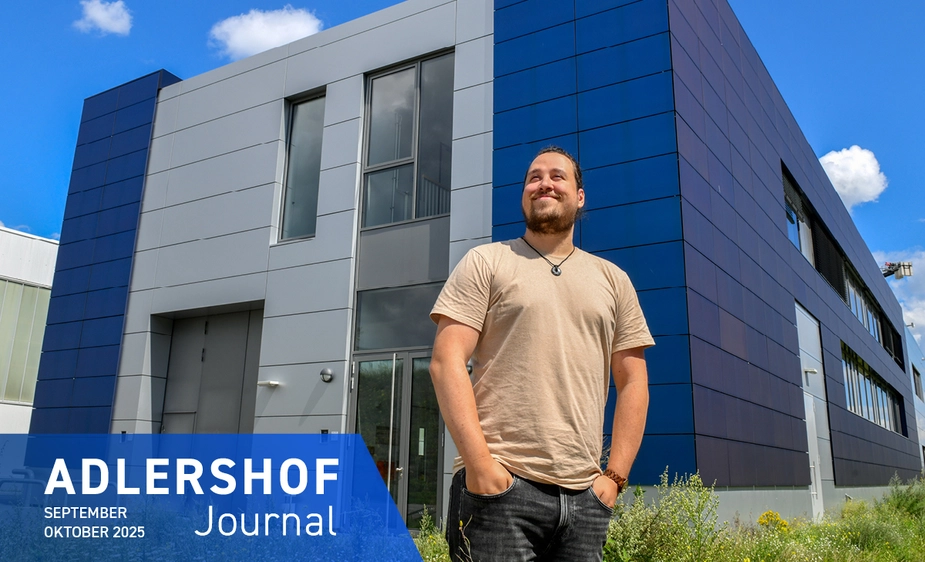The Solar Consultant
Niklas Albinius shares his knowledge about building with photovoltaics
Who knows what his career path would have looked like if he hadn’t asked the question? Niklas Albinius’ curiosity was piqued after a lecture on ‘Solar Construction’ at the University of Applied Sciences in Berlin, where he had been studying renewable energies since 2016. He approached the lecturer and inquired about internship opportunities. It was worth asking as he learned that the Helmholtz-Zentrum Berlin für Materialien und Energie (HZB) had recently set up a consulting office in neighbouring Adlershof, where there could be something for him. “And I’ve been there ever since.”
The 27-year-old has now spent almost a fifth of his life at the consulting office for building-integrated photovoltaics – initially for two years as a student assistant and, since 2022, as a research assistant. So what are the possibilities and benefits of integrating solar modules into new or existing architecture? This is exactly what the five-strong team at HZB are finding out. “It’s free and product neutral,” underlines Albinius. “Research-based and independent.” With this profile, the consulting office is “unique in Germany, and perhaps even in Europe.”
Albinius has a south-facing balcony at his flat not far from Adlershof’s marketplace, but not one of the so-called balcony power plants as his flat has a tree in front of it which blocks out the sun. Not every location is suitable. The consulting office gives its customers (architects, property developers, and private owners, among others) computer-assisted yield simulations to show whether the expected energy yield makes it worthwhile to install a new solar power system for their project.
In any case, simply hanging a module out on the balcony doesn’t correspond to the meaning of “building-integrated” photovoltaics. These are components which ‘replace other building materials’, such as roofs, facades, parapet elements, and even sun protection. “Every surface on a building envelope can be solar-activated.” A roof-integrated solar module, for example, is not installed on a tiled roof, but rather replaces the tiles in order to fulfil several tasks. “It produces sustainable electricity, protects against the weather, and, ideally, it looks good too,” explains Albinius.
His speciality is retrofitting listed historic buildings, which he finds “particularly challenging”. Monument protection authorities are relentless, and it is not permitted to change the historic appearance. The trick is to conceal the solar technology so that it is as inconspicuous as possible. For example, in 2024, a historic abbey building in Würzburg was given a new roof made of traditional terracotta tiles and solar modules designed to look like tiles which were an exact colour match.
Not far from Ernst-Ruska-Ufer, a two-storey laboratory building belonging to the Helmholtz-Zentrum has stood since 2021 with a facade clad in blue solar modules on three sides, covering an area of around 380 square metres. Equipped with a range of sensor and measurement technology, it serves as a ‘living laboratory’ to learn how vertically-installed photovoltaics behave in changing weather and sunlight conditions in comparison to a roof system. Albinius used the data obtained as a result to write his master’s thesis in 2022, in which he discussed the cooling of solar facades through the natural rear ventilation of solar modules.
The living lab has become a ‘major attraction’, drawing in visiting groups from far and wide, including Denmark and the United States. “A building which can generate power? What does that look like in reality?” The consulting office runs free guided tours. Albinius believes that the technology is not new, just “not yet well known”. And he makes it his goal every day to change that.
Dr. Winfried Dolderer for Adlershof Journal
BAIP Consultancy office for building-integrated photovoltaics
